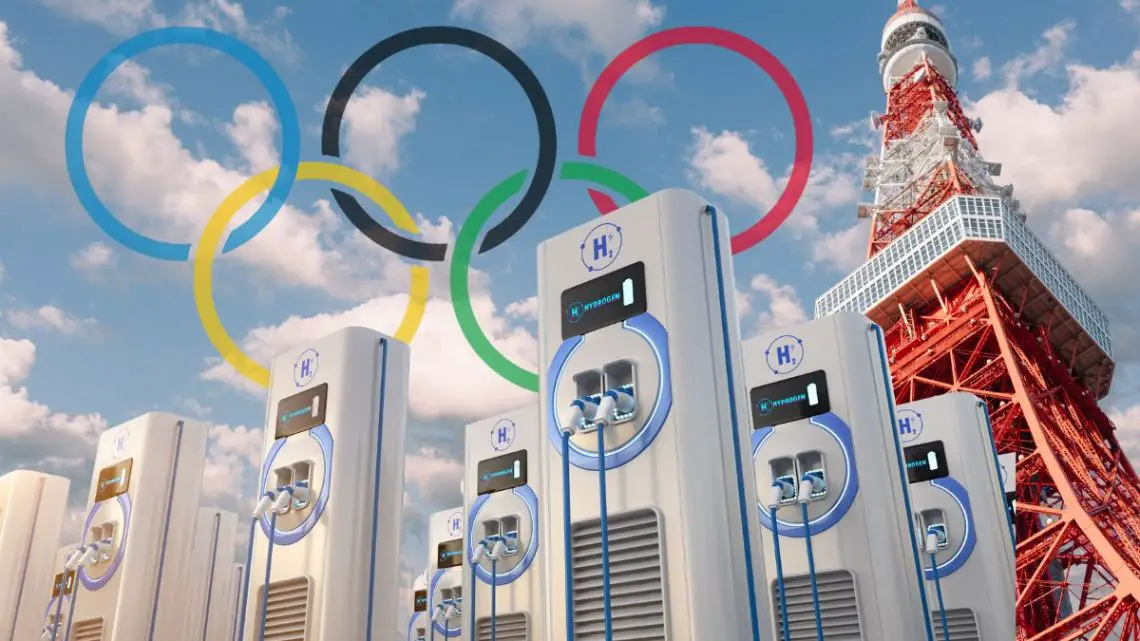
Hydrogen finds new life at the once Tokyo Olympics site
April 3, 2024The former Olympic village in Japan is now home to one of the nation’s largest H2 stations.
The Tokyo Olympics may be long over, but hydrogen, which played a role during the event, continues to live on at the site that was once the Olympics and Paralympics main athlete’s village. According to the Tokyo Metropolitan Government (TMG), an H2 refueling station was recently opened at the former site and is one of the largest in the country.
A daily supply for 40 fuel cell buses.
The hydrogen refueling station will reportedly be supplied with enough of the clean fuel to operate about 40 hydrogen-powered buses a day.
The station is operated by Eneos Corp., a major distributor of oil and Japan’s largest oil company. Eneos will also produce hydrogen for the station in line with the city’s government plan for the site.
Hydrogen will also power apartment blocks.
In addition to the station, hydrogen will also be used to power apartment blocks at the former Olympic’s athlete’s village. The H2 will be delivered to the district of Harumi in Chuo Ward via an underground pipeline. TMG says that this will mark the first time the gas is piped into a specific area and added to a residential energy mix.

The clean fuel will power lighting and elevators in condominiums and commercial facilities, while waste heat from fuel cells will be utilized to generate hot water for outdoor pet-paw washing stations. This hydrogen energy project is a joint venture between Tokyo Gas, Toshiba, Panasonic, and Eneos.
Trialing a new technique.
The hydrogen-powered residential project is part of TMG’s effort to expand the use of H2. The government is using the project to test a new technique. The hope in expanding the use of hydrogen is to help Tokyo in its efforts to cut its greenhouse gas emission in half by 2030 compared with 2000 levels.
H2 and the Olympic Games
 The focus on sustainable and eco-friendly practices is becoming more prominent with each Olympic Games held. Japan was the first to truly shine a light on hydrogen at the Olympics for the 2020 games, having had 100 Toyota fuel cell buses and 500 Mirai sedans available as transportation for athletes between venues. It was also the first to power the Olympic flame with H2. Hydrogen was then seen at the Beijing Olympic Winter Games in 2022, where 212 H2 buses were used to provide transportation.
The focus on sustainable and eco-friendly practices is becoming more prominent with each Olympic Games held. Japan was the first to truly shine a light on hydrogen at the Olympics for the 2020 games, having had 100 Toyota fuel cell buses and 500 Mirai sedans available as transportation for athletes between venues. It was also the first to power the Olympic flame with H2. Hydrogen was then seen at the Beijing Olympic Winter Games in 2022, where 212 H2 buses were used to provide transportation.

Air Liquide Paris Hydrogen Station – Image Credit Air Liquide
Update in Paris – Paving the Way for Sustainable Mobility at Paris 2024
Also, the Olympic and Paralympic Games Paris 2024 are set to be a landmark event in the journey towards environmental sustainability, thanks in large part to the efforts of Air Liquide. By establishing a vast network of hydrogen stations throughout the Ile-de-France region, prominently featuring the Place de l’Alma station in Paris, Air Liquide is not just supporting the Games with eco-friendly solutions but is also propelling the movement for sustainable mobility into the spotlight. With the initiative already gearing up to power 500 hydrogen vehicles, including the 500 Toyota Mirai cars that will constitute the official fleet of Paris 2024, Air Liquide’s commitment shines through.



 With over 15 years of reporting hydrogen news, we are your premier source for the latest updates and insights in hydrogen and renewable energy.
With over 15 years of reporting hydrogen news, we are your premier source for the latest updates and insights in hydrogen and renewable energy.